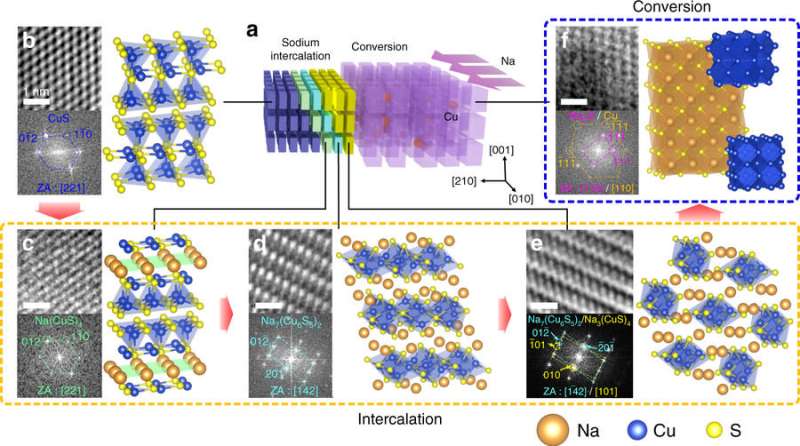Team develops sodium ion batteries using copper sulfide

A KAIST research team recently developed sodium ion batteries using copper sulfide anode. This finding will contribute to advancing the commercialization of sodium ion batteries (SIBs) and reducing the production cost of any electronic products with batteries.
Professor Jong Min Yuk and Emeritus Professor Jeong Yong Lee from Department of Materials Science and Engineering developed a new anode material suitable for use in an SIB. Compared to the existing anode materials, the copper sulfide anode was measured to exhibit 1.5 times better cyclability with projected 40 percent reduction in cost.
Lithium-ion batteries (Li-ion batteries or LIBs) are widely used in mobile phones and other personal electronics. However, large-scale energy storage systems require less expensive, more abundant materials. Hence, a SIBs have attracted enormous attention for their advantage over lithium-based batteries.
However, one main obstacle to the commercialization of SIBs is the lack of suitable anodes that exhibit high capacity and cycling stability. Hence, the research team sought a good anode material offering high electrical conductivity and theoretical capacity. They chose copper sulfide in nanoplates, which "prefers to make an alloy with sodium and is thus promising for high capacity and long-term cyclability."
The study reveals that copper sulfide undergoes crystallographic tuning to make a room for sodium insertion. Results indicate that the sodium ion-insertion capacity of copper sulfide is as much as 1.5 times that of lithium ions for graphite. Furthermore, a battery with this new anode material retains 90 percent of its original capacity for 250 charge-discharge cycles.
With the natural abundance of sodium in seawater, this development may contribute to reduction in battery costs, which can comprise up to 30 percent of the cost of some consumer electronics.
Professor Yuk said, "These days, people are showing a great deal of interest in products related to renewable energy due to recent micro-dust issues ongoing in Korea. This study may help Korea get a head-start on renewable energy products."
More information: Jae Yeol Park et al, Atomic visualization of a non-equilibrium sodiation pathway in copper sulfide, Nature Communications (2018). DOI: 10.1038/s41467-018-03322-9
Journal information: Nature Communications





















